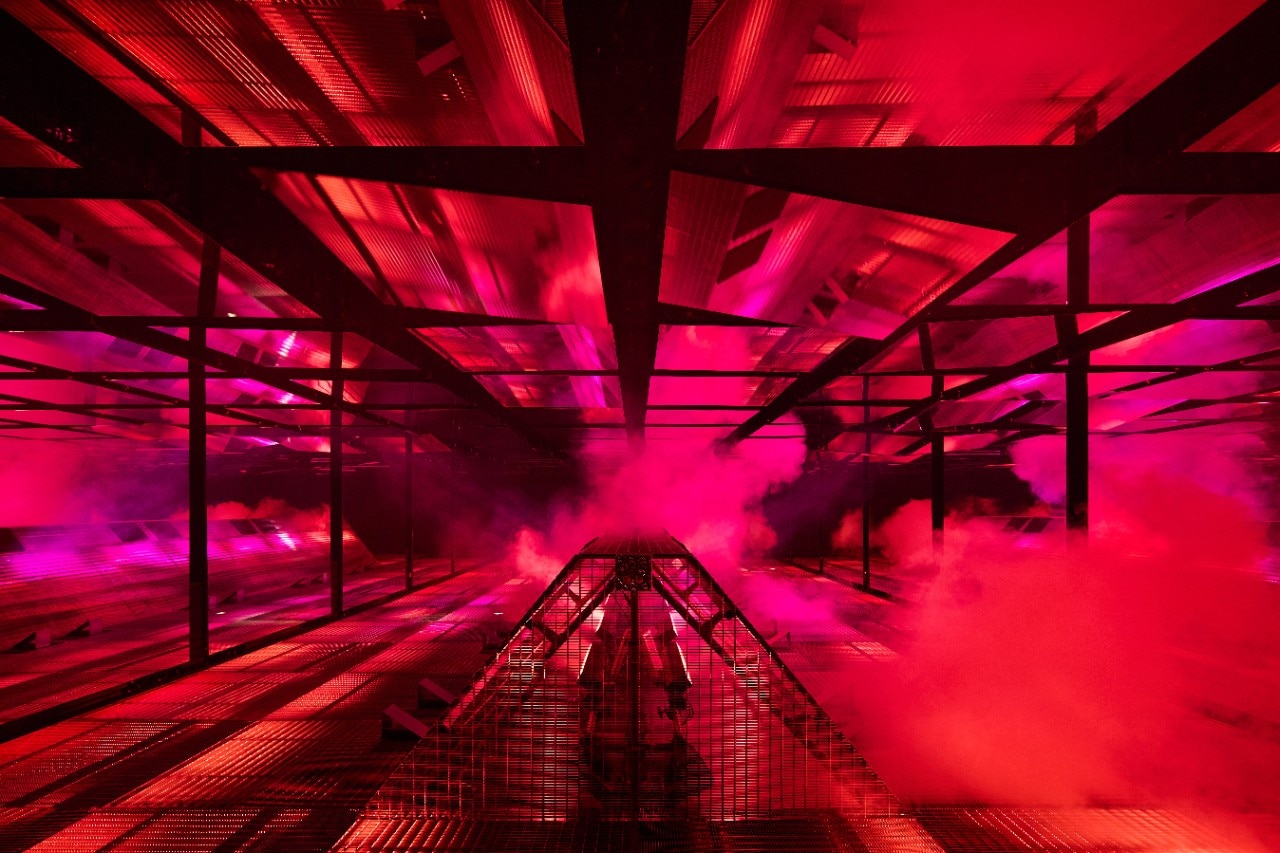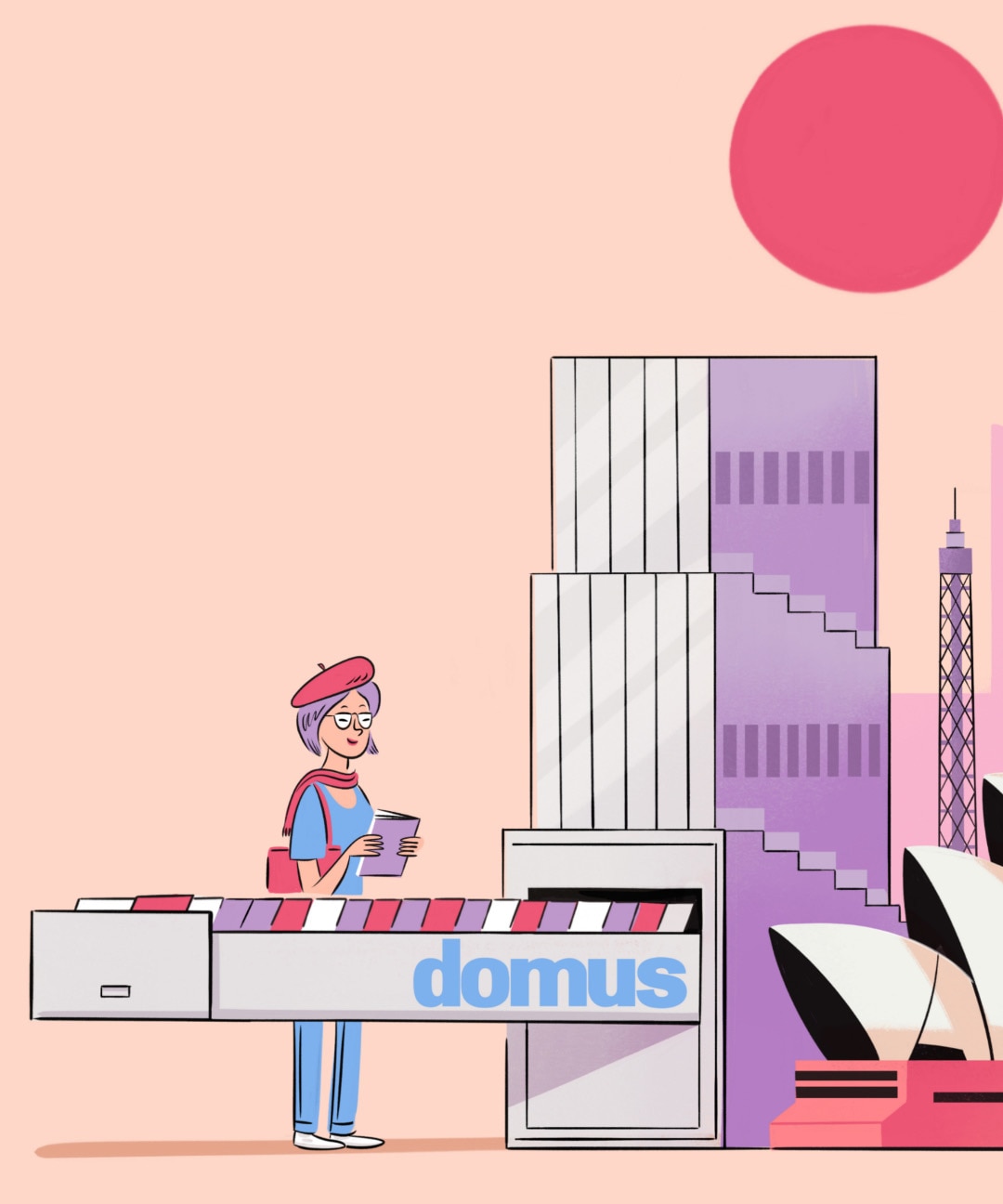Designer Willo Perron is behind the Vans exhibit at the Triennale. On the surface, it might seem just like another show among many happening in Milan this week. But considering the respect for Perron (whom we’ve previously interviewed) and the fact that Tim Hecker – creator of Virgins and Ravedeath, 1972 – is responsible for the installation’s soundtrack, you can already tell something’s about to hit the spot. “The immersive installation seamlessly transports guests from Vans’ rich past to a visionary future,” reads the press release. You’d probably expect the usual goody-goody routine: brands just checking off their to-do lists for Fuorisalone.

Maybe the issue with the bias surrounding Vans’ installation is, well, Vans itself. The Anaheim-based company was once a countercultural icon, back when countercultures still had meaning. Now, it’s seen as trivially mainstream. Yet, unlike other mainstream brands that continue to push innovation in both product and narrative, Vans seems stuck in a suspended past, forever tied to a white sock sloppiness – a nostalgic dullness that endlessly repeats itself, much like those bands you secretly still listen to, with just a hint of guilt. Once “cool,” now they’re a relic – like Pearl Jam or Green Day – forever trapped in a bygone era.

Given these preconceived notions, it wasn’t a shock that Vans didn’t make it to the “Top 5 Most Anticipated Installations of Fuorisalone.” Not even in the top 10, or probably 20. Personally, I stumbled upon it by chance, dodging my way through the Monday morning press event. Later, after taking in Bob Wilson’s Mother at the Castello, I swung by the nearby Triennale bar to finish up an article and send it off to our BASE desk. With barely a line, I slipped right into Vans. Expectations low.
Instead, it was a total knockout.
Forget the Bob Wilson stuff that seemed poised to change our lives – this left me thinking!

“I’ve done a lot of live performances in the past,” Perron tells Domus. “But nothing like this one.” What makes Checkered Future: Frequency Manifest unique is that it’s almost impossible to explain with words. Even in the videos, it’s hard to grasp what the hell is going on. And honestly, I probably didn’t fully get it myself – and I probably wouldn’t even after countless replays. Nor did anyone else I spoke to.
Willo Perron smashes so many of Design Week's unwritten rules, starting with the very concept of an “exploratory experience.” Here you are, half-reclined on a giant metal perch, and things are happening all around you. It’s a full-on journey of light and sound. Everything’s harsh, uncomfortable; your perceptions are relentlessly tested. A system of moving mirrors distorts your sense of space. Light slams into you. Sound hovers over you. You’re never truly uncomfortable – you just don’t know where you are. Or maybe you’re not anywhere at all. To put it in Christopher Nolan terms, it’s Inception meets Interstellar. “There are definitely some sci-fi moments that came about, so I can understand the reference,” Perron says.

When asked about his main design intention, Perron tells Domus, “I think it’s a meditation on sound and space.” The project started from a conversation about how the shoe’s new checkered design was inspired by sound waves. The concept has two parts, he explains. The first is translating “the innovation of the checkered pattern into this sound wave.” The second is that much of the installation’s interior (floor and ceiling included) “is done in the same checkerboard pattern, transforming the two-dimensional into a three-dimensional space.” Checkered Future represents an evolution of Vans’ iconic checkered pattern, and the installation explores sound frequency and its physical manifestations. “At a low-frequency sound, the room is quite contracted, with darker, saturated colors,” Perron explains. “And as the room expands and opens up, the color changes to something brighter and lighter and the tonality and frequency is much higher.”

As a corollary to this impressive work, there was also the “little” bonus of Björk’s DJ set in the Triennale gardens. With an “epic” setup by Perron (as described by Domus guest editor Bjarke Ingels), Björk – “the smallest person with probably the biggest personality” – performed from atop a terrace (“like Ceausescu,” jokes Ingels). It was probably the most coveted evening event of Design Week, with insane guest lists and a result that exceeded expectations in terms of communication. But many friends asked me, “What does Björk even have to do with Vans?”
Oh, of course – there’s a shoe. The Old Skool 36 Fm is part of OTW, Van's most experimental lineup. Inspired by sound waves, is a reimagining of the Style 36, Vans’ second skate shoe and the first to feature the side stripe that’s become synonymous with the brand. According to Vans, it “blends past inspirations with future aspirations.” A step forward, but not as far as all the impressive machinery Vans has showcased at the Triennale. And let’s not forget: it likely cost a small fortune. We’ll see if this marks a true Vans reboot, as we hope, or if it just remains a memorable, albeit singular, exploit.

"Less, but better", the "necessary" project at Agorà Design
The festival dedicated to conscious design returns to Salento: conferences, events, workshops and a challenge for the designers of today and tomorrow.










